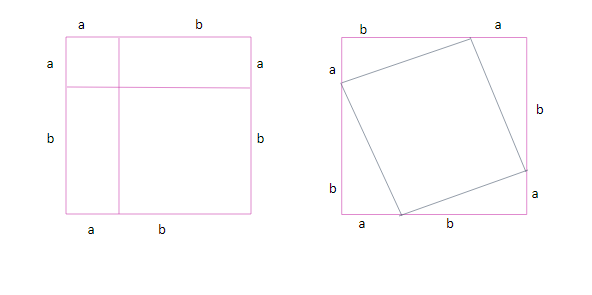What is Pythagoras Theorem?
Triangles with right angles follow a law called Pythagoras' theorem. The square of the longest side of the triangle is equal to the sum of squares of the two remaining sides in the triangle. On its converse, it can also be said that the triangle in which the square of one side is equal to the sum of squares of two sides then the triangles.
Have a look at the two squares given; they both represent the square of a+b unit length.

Since we have the same areas on both sides we can equate them. On the left-hand side there are two rectangles of area a*b units and two squares of length a and respectively. In the second figure, we have a square in the middle that's tilted along with four triangles each of area ½*ab. We suppose the length of the tilted square is c and thus the area of that square is c2 units.
When we equate the area on two sides
a2 +b2 + 2*ab=c2 +4*1/2 ab
a2 +b2 =c2
We can have a look at any right-angled triangle on the figure shown on the right that the square of the side opposite to the right-angled triangle is the sum of areas of squares of the remaining two sides. This is only true when the triangle is a right-angled triangle.
